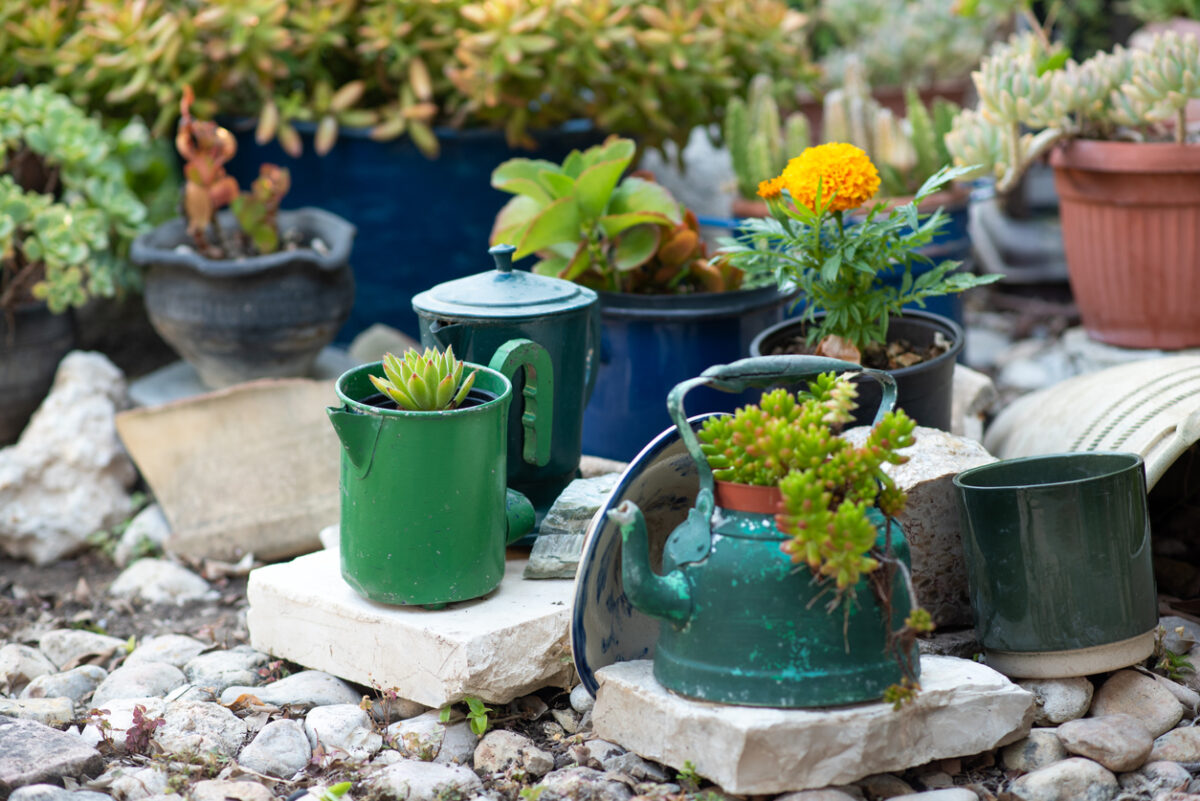

We may earn revenue from the products available on this page and participate in affiliate programs. Learn More ›
Gardening is an excellent way to spend time outside, grow your own food, and even reduce your environmental impact. If you take it a step farther and mindfully incorporate sustainable gardening practices to your space, it makes this hobby even more rewarding.
Sustainable gardening is about making as little negative impact on our natural resources as possible while growing and harvesting in the yard. This low-maintenance gardening style prioritizes local ecosystem support through organic practices and resource conservation at the same level as maintaining your plot’s aesthetic appeal.
Try out these sustainable gardening trends and do your part for a greener future.
1. Conserve Water
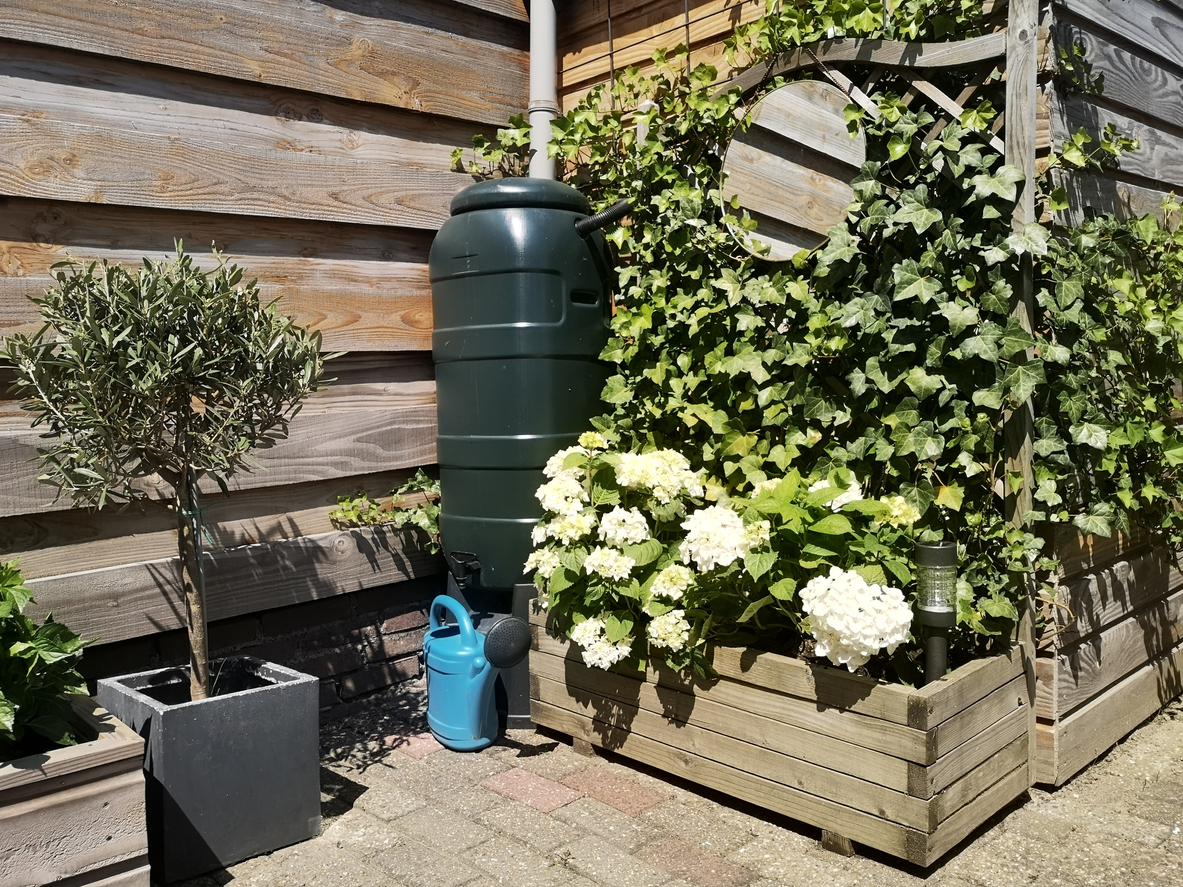
Drinking water is in short supply in many parts of the country, making it even more vital to conserve as much as we can. Rainscaping features such as rain gardens and rock dams help manage stormwater. Rainwater collection systems like rain barrels enable gardeners to use water that doesn’t come from municipal or private sources.
Sustainable gardeners also use mulch and ground covers to slow down water evaporation in their soil, ensuring water doesn’t run off or drain so fast that plants don’t have time to soak it in.
2. Invite Good Insects

An insect-free garden is not healthy for your backyard ecosystem—bugs are important! It’s still necessary to deter pests that damage and kill plants, but you should still attract helpful insects to your garden.
Aphids, mites, caterpillars, and other pests consume your plants and can devastate your crops. Learn which helpful insects are predators, and attract or introduce them to your yard as soon as signs of pests appear. Ladybugs, green lacewings, ground beetles, and many others are beneficial bugs that can help your garden thrive.
Aside from pest control, your garden needs to be pollinated, too. Make sure you’re incorporating plants that attract bees, flies, and other pollinators to your garden beds—there are plenty of tips and flowering plants to help make that happen.
3. Start Composting

According to the Environmental Protection Agency, food scraps and yard waste make up more than 30 percent of what gets thrown out at home. Why discard nutrients that your garden beds can use? Adding compost to your garden keeps that material out of landfills, improves your soil’s health, recycles nutrients, and offers more environmental benefits like water conservation.
Composting provides an environment for bacteria, fungi, and worms to quickly break down plant and food scraps and turn it into nutrient-rich material that makes gardens flourish.
RELATED: This Organic Gardening Supply Is Stirring Up Controversy—Should You Stop Using It?
4. Choose Native Plants
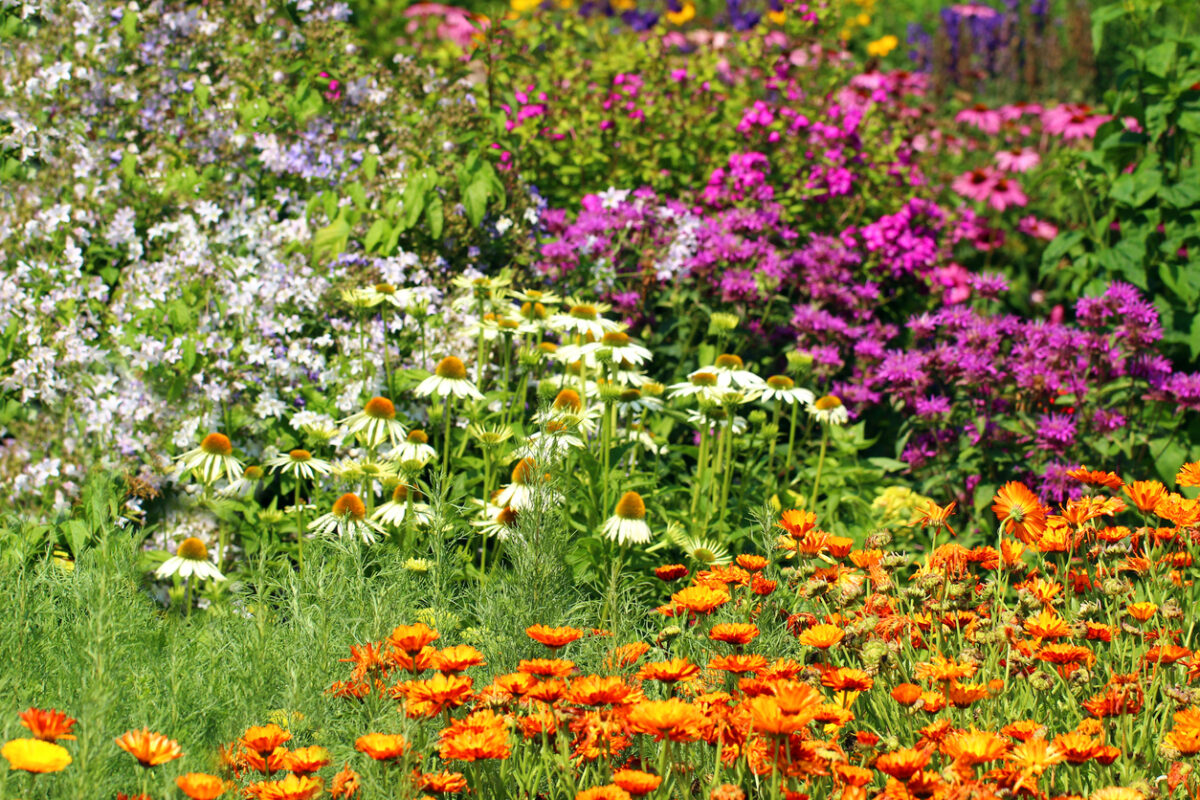
The next time you’re shopping at the plant nursery, refrain from buying plants from other regions. Though they may look beautiful, they require disproportionate resources to survive if they aren’t a native plant in your climate.
One major reason to reintroduce native plants to your garden bed is their handsome simplicity. Native plants are more likely to succeed with less effort since they’re suited for your particular climate. If you’re unsure of which plants to choose, check online or ask a local gardening expert for advice. When planting native species in your garden, opt for plants that are hardy and high-yielding—and avoid invasive species.
5. Swap Out Gas-Powered Landscaping Tools
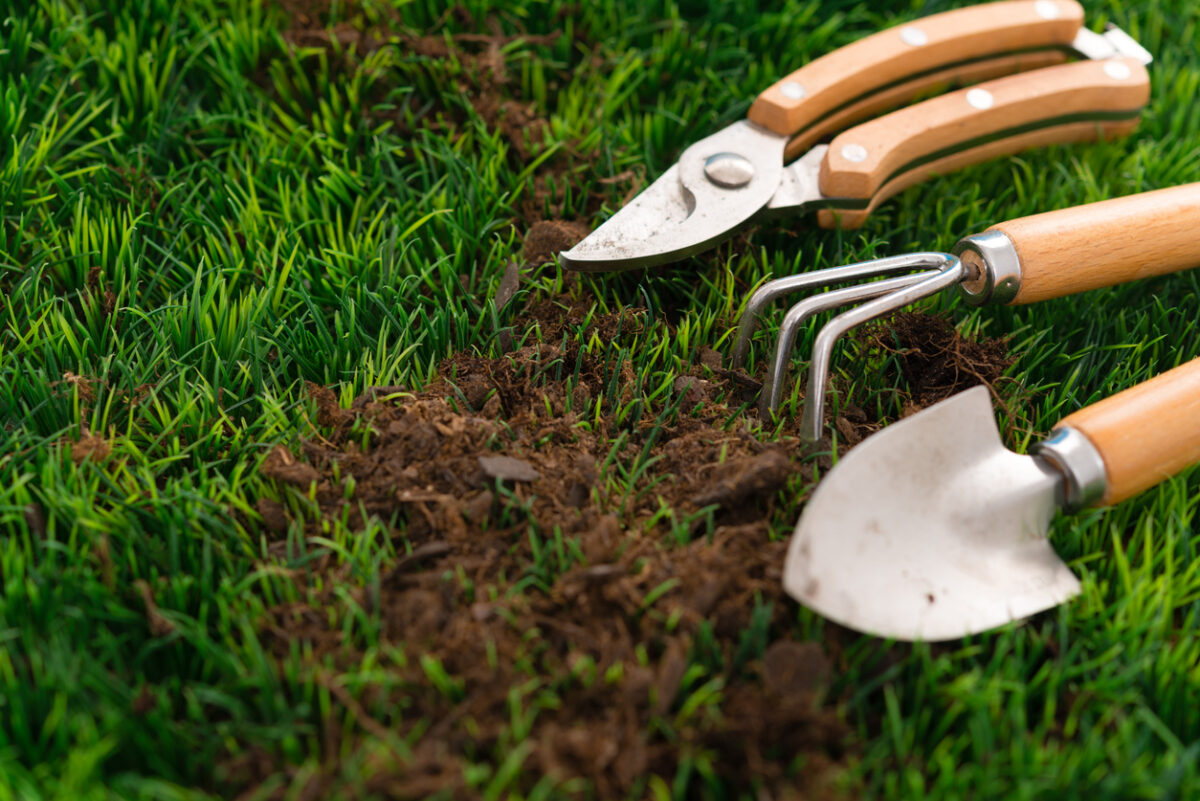
Gas-powered tools make yard work and gardening easy, but at a cost. These types of tools cause significant noise and air pollution, with gas lawn mowers producing up to five percent of the nation’s air pollution. Additionally, gardeners who use gas-powered tools are exposed to exhaust fumes, which can potentially lead to health issues.
Instead of using your gas-powered leaf blower or hedge trimmer, manual tools like rakes and shears are sustainable and time-tested. It’s a bit more effort, but creates less stress on the environment. Alternatively, you also avoid excess emissions by investing in battery-powered tools, such as cordless mowers.
6. Cut Out Harmful Chemicals
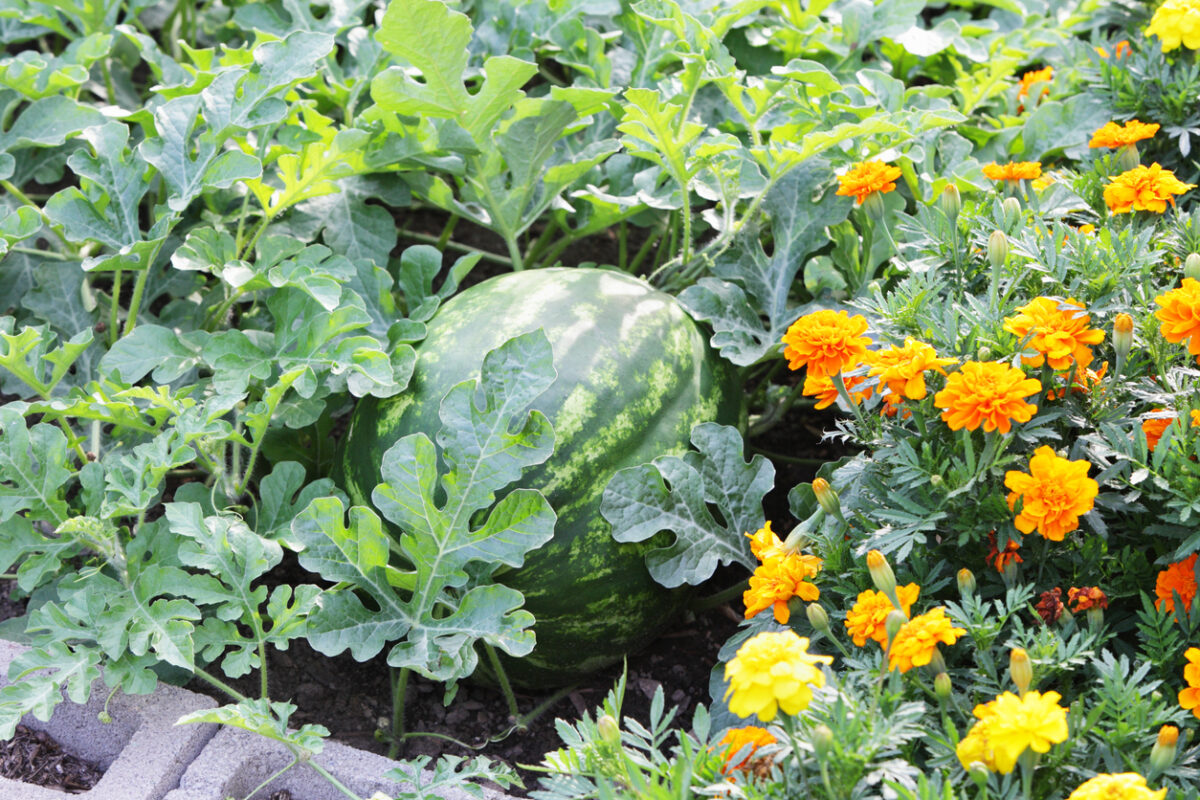
Herbicide and pesticide use has long been the go-to fix for insects, weeds, and other garden problems. But if you want to stick with sustainable gardening, these sprays and granules have got to go. Luckily, there are sustainable defenses that will protect your yard in their stead.
Companion planting can deter insects and keep plants from being overtaken by aggressive species. The practice involves strategically placing plants that pests don’t like near the ones they do. For example, the scent of marigolds repels cabbage worms from feasting on brassicas. As for weeds, remove them by hand or kill them with corn gluten meal or cleaning vinegar. One of many safe DIY weed killers consists of ½ gallon of vinegar, ½ cup of salt, and 2 tablespoons of dish soap mixed together in a spray bottle.
7. Save Your Seeds
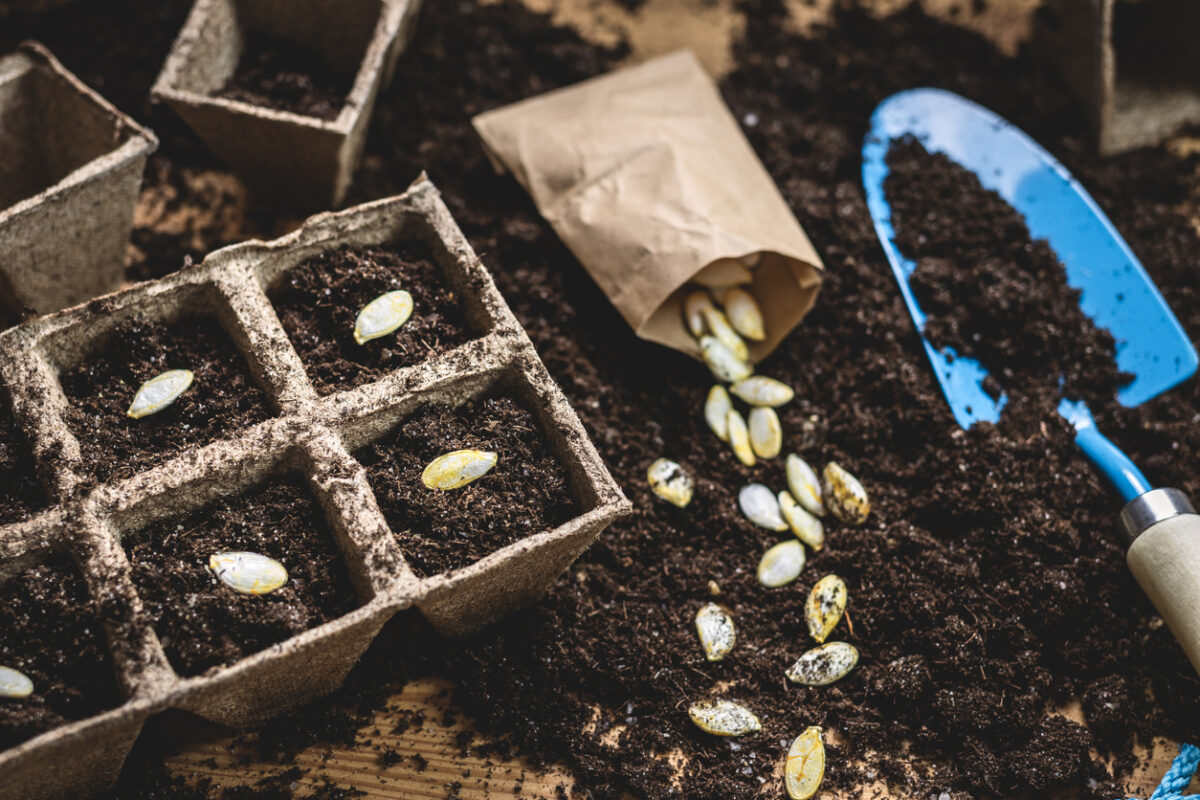
Learning how to harvest your own seeds might seem like a smaller contribution to resource conservation. However, it makes a difference by decreasing greenhouse gas emissions from companies that transport seeds to stores locally, nationally, and sometimes internationally.
If you’re new to saving and harvesting native plant seeds from your own garden, choose easy starters like peas, beans, peppers, and tomatoes. After harvesting, store your seeds in a cool, dark, and dry place, like a closet or pantry. Once dry, you can store seeds in airtight containers in the fridge or freezer for years.
RELATED: The Best Battery-Powered Lawn Mowers to Keep Your Yard Looking Beautiful, Tested
8. Design a Better Garden
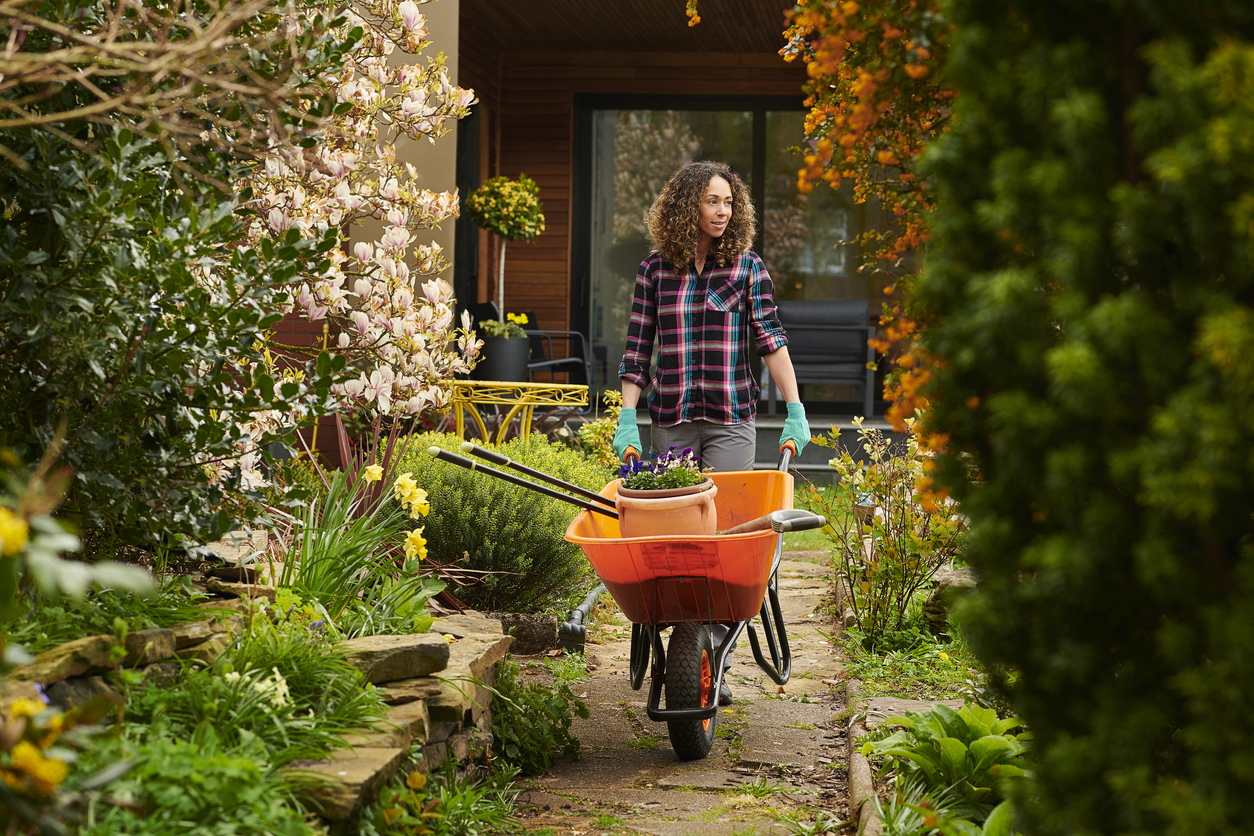
Everything in your garden has an impact on your backyard ecosystem and resources. Thoughtfully choosing and placing items and plants in and around your garden beds can be time-consuming, but it’s necessary to minimize your landscape’s carbon footprint.
Write down details about your garden or draw a diagram of its layout, noting each area’s natural nuances. Then, decide which kind of plants to grow and where they will thrive. Put sun-loving plants in spots with the best exposure, shade-loving plants in the shadows of the former, and water-loving plants where the most moisture collects. Plant deciduous trees where they will help shade and cool your home in the summer to reduce energy consumption, while still allowing some room for winter sun to add some indoor warmth.
When building projects at home, use recycled and eco-friendly building materials and Forest Stewardship Council (FSC) wood for your garden boxes, fences, and other structures.
9. Nix the Turf
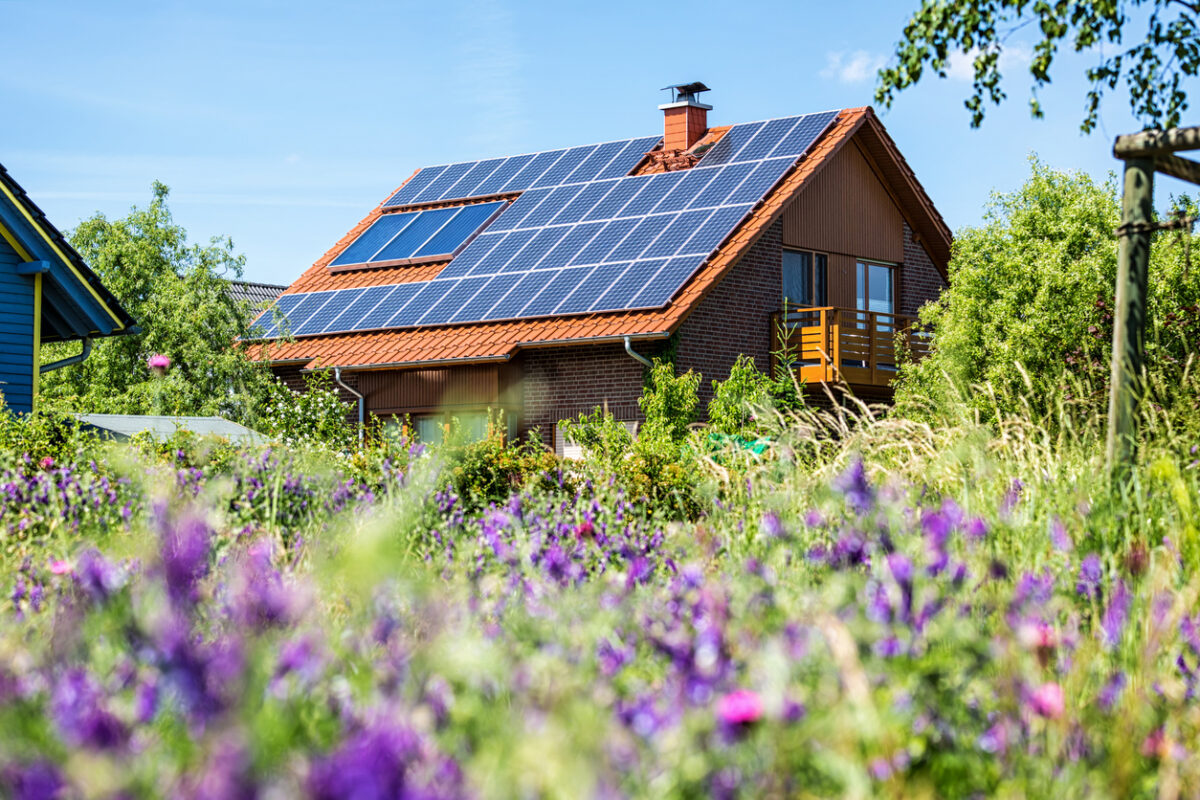
Let’s face it: Turf looks nice, but—unless you actually get use out of it—there are much better ways to use the space. By reducing your lawn’s size, switching to low-water native grasses, or even eliminating turf completely, a traditional lawn can be replaced with something more beneficial to your sustainable garden.
That space can hold food-producing garden beds for your household. It can be filled with native blossoms that attract hummingbirds and butterflies. Or, it could simply conserve water as a low-effort rock garden populated by shrubs and drought-tolerant plants.
RELATED: Keyhole Gardening: What You Need to Know to Get Started
10. Embrace the Imperfect
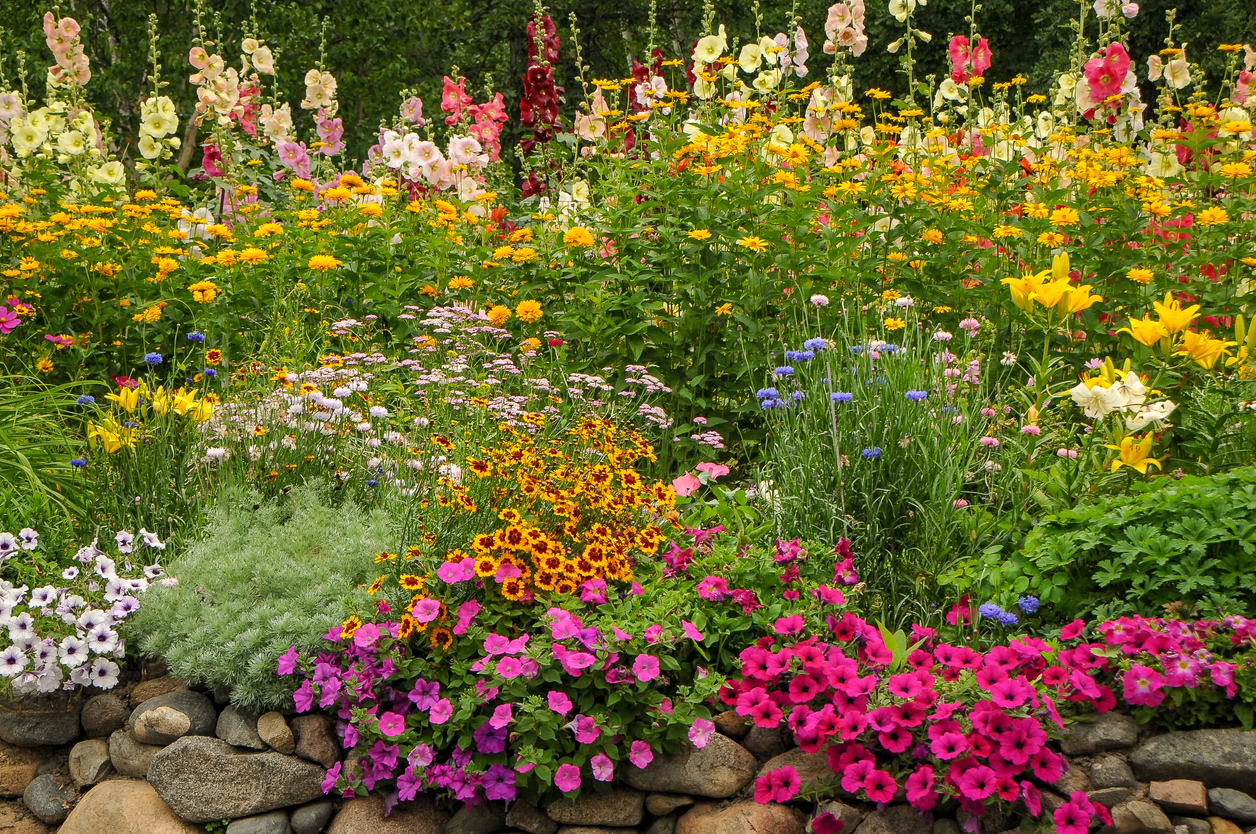
Meticulous, well-manicured gardens use more resources than sustainable ones. It’s easy to fall into the trap of valuing aesthetics over all else, but there’s plenty of beauty to be enjoyed in simpler, more natural gardenscapes.
Change how you think about your garden—it can be purposeful in addition to looking pretty. Instead of agonizing over dandelions popping up, remember that these broadleaf weeds are part of your local ecosystem and attract pollinators to your yard (and they’re edible, too). Gardeners give a lot of time and effort to their plots, and a sustainable garden has a lot more to give in return than the traditional yard.
